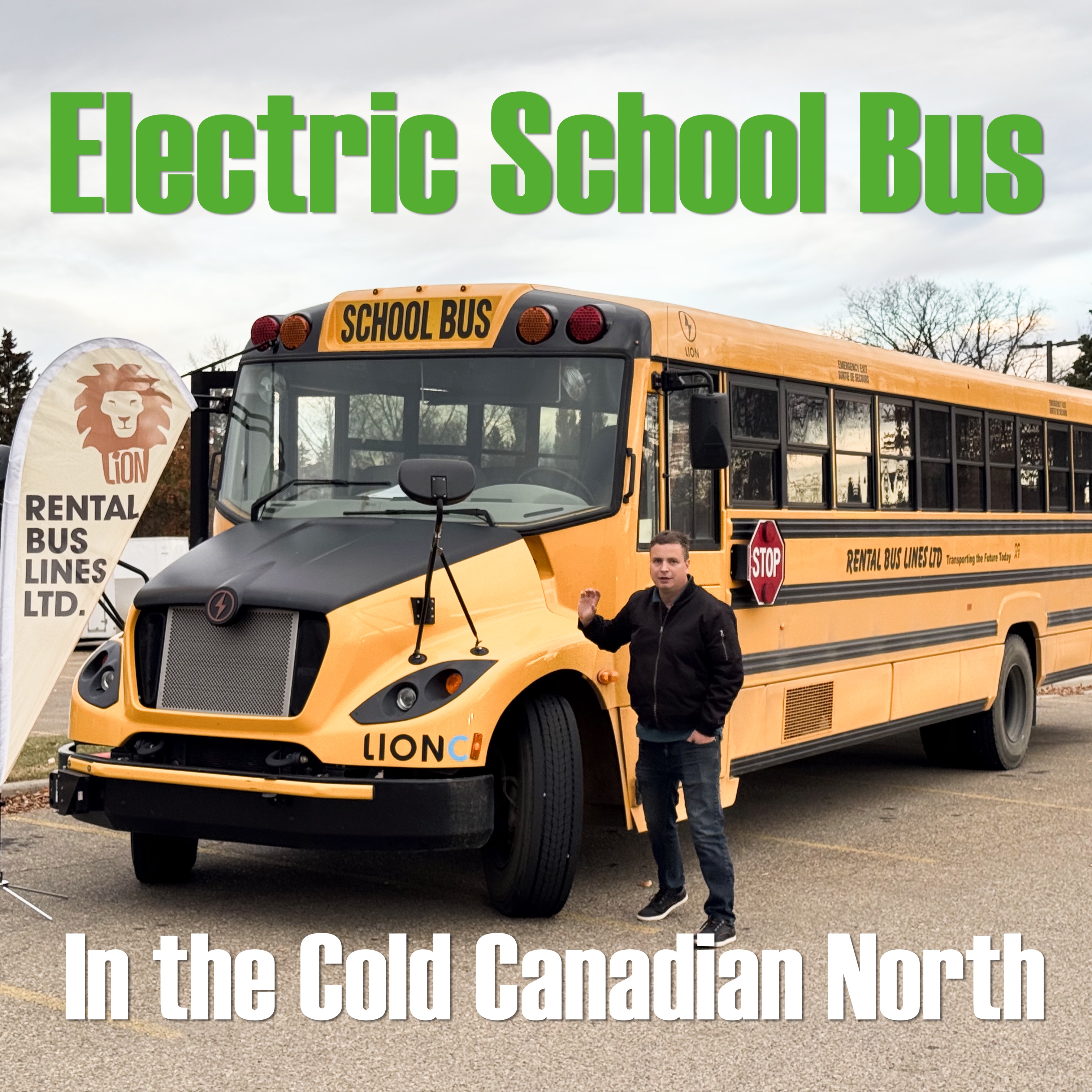By David Dodge, GreenEnergyFutures.ca
At Rental Bus Lines in Stony Plain, Alberta, the wheels on the bus have been going around and around on an electric school bus since 2017.
The bus was parked outside the Energy Innovation Fair in Red Deer, Alberta, and when I approached the bus, Jeremy Kureluk was more than happy to hop out of his bus to share the story of their electric bus.
Rental Bus Lines has 50 buses and operates in and around Parkland County and Edmonton. They bought their first bus in 2017, but Jeremy showed me their newer 2023 Lion Electric bus.
The bus is a single-speed drive that tops out at 96 or 97 kilometres per hour, which is “fine for school bus use,” he says.
This bus has a range of 150 km, and the newer model now has a range of 175 kilometres.
On a normal day, Jeremy says it takes only 3 hours to charge the bus using their 80-amp charger. That’s because they only use about half the charge on a normal day.
The best part about these buses, says Jeremy, is “The components are all readily available,” unlike some new vehicles that may have strange parts that are hard to find.
The parts on this bus are mostly standard truck parts ranging from the front end to the brakes, which means Rental Bus Line’s regular maintenance folks have no problem working on the buses.
“It keeps it very simple to introduce into an existing fleet. Your mechanics don’t have to relearn an entirely new technology because they’re already working with these components on existing vehicles,” says Kureluk.

Range is not an issue
So how does the range work out in real-world conditions? Kureluk says these buses work as advertised.
“We’ve done 150 kilometres, and that’s quite scary,” says Kureluk, who picked the bus up from the plant in St. Jerome, Quebec, and drove it back to Alberta.
“When you get down to under the 10 percent range, we do lose some power – so it does like to slow down. I know I’ve done 150 km, but that was very, very much pushing it.”
Range hasn’t been an issue at all. “This would cover about 90 percent of our routes currently.”

The Electric School bus in the cold, cold winter
I asked him how they work when it gets down to -40 Celsius and his answer was surprising.
“They do cancel school but at -40,” says Kureluk, but they use the electric bus as a warming shelter when they’re struggling to get the diesel buses going.
“We can park this (electric bus) closer to where the other buses are parked, so we can use the heat to keep warm while we’re boosting and servicing the diesel buses that we’re trying to get started.”
My neighbour drives a school bus, and he says school buses are notoriously cold in the wintertime.
But these electric buses are not.
These buses use a diesel heater for heating the cab of the bus and in the morning when the driver gets to the bus, the cab is warm and the windshield is defrosted all while still charging the bus. The system senses the weather and turns on automatically before the driver hops on the bus.
This means the battery is preserved for driving the bus. He also says the drive battery is thermally managed.
“They’re heated so they can take a full charge in our cold Canadian climate,” says Kureluk.
“Winter with the diesel heater is absolutely fantastic,” he says.
Charging infrastructure is where the rubber hits the road
“If we were to go and get 50 of these buses tomorrow, we can’t park them in all one location,” says Kureluk.
That’s because the power infrastructure in most locations could not support an entire fleet of buses and their 80-amp chargers.
“We’re working now with some partners in place – it’s very early stages, but we’re hoping to be able to work with them in establishing depots for electric school buses so we could have five here, five there, ten there throughout Edmonton and the area.”
The idea is to distribute the buses in groups where they are used and where the electricity is available.
Kureluk is ready for more electric buses and he says the manufacturers can’t provide them fast enough. He foresees a future when the bus company will use their electric buses as a virtual power plant to help the grid provide peak power as a secondary source of revenue.
If this seems like a far-off fantasy, it’s not.
Green Energy Futures recently attended the Decentralized Energy Canada Forum in Whistler. There, we met Robert Safrata of FUSE, a Vancouver startup piloting the idea of using bus fleets as virtual power plants. FUSE specializes in building virtual power networks.
Watch for this in a future story.

